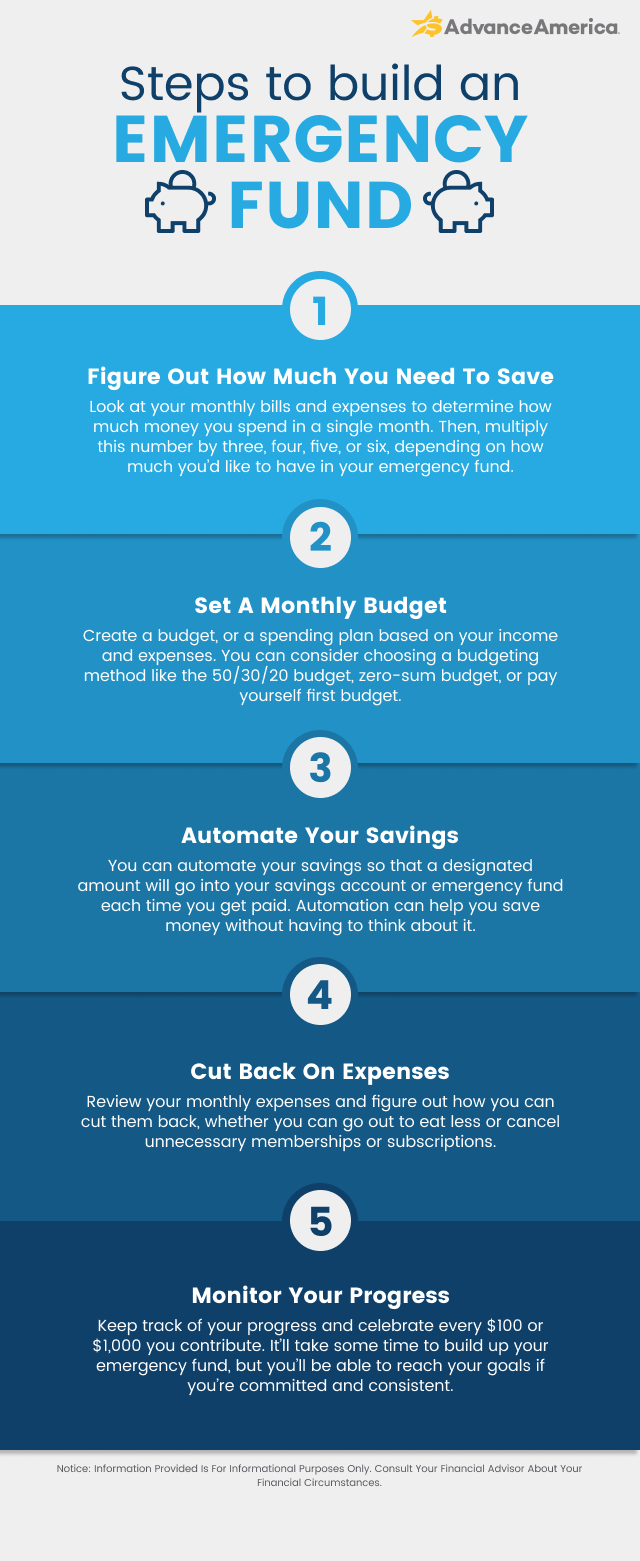
How Much Should I Have In An Emergency Fund?
Unexpected financial situations are bound to happen from time to time, whether you have to pay a medical bill or lose your job. That’s why emergency funds are important. Having a financial safety net can help you be prepared for whatever unforeseen expense or situation you may be facing. Here’s a closer look at how emergency funds work, how much you should have in one, and how to build one.
How do emergency funds work?
Emergency funds are pools of money you can pull from when you face unexpected expenses or situations, like a home or car repair bill, medical bill, or unemployment. It can give you the peace of mind of knowing you have money available to pay for bills and basic living expenses.
Why are emergency funds important?
Emergency funds are important because they can act as a safety net to help you cover costs and avoid going into debt when an unforeseen event happens. While everyone should have an emergency fund, it’s particularly important if you’re the sole earner in your household, own a home, or are self-employed.
How much you should save in an emergency fund
Many financial experts recommend that you save 3 to 6 months’ worth of expenses in your emergency fund. Even if you don’t think you can save up that much, you should still build an emergency fund. Saving something is better than nothing, and having a couple hundred or thousand dollars can help when you’re in a financial pinch.

How to build an emergency fund
Here’s how you can build an emergency fund:
1. Figure out how much you need to save
First, look at your monthly bills and expenses. Then, determine how much money you spend in a single month. Multiply this number by three, four, five, or six, depending on how much you’d like to have in your emergency fund. The answer will give you an idea of how much you should save.
2. Set a monthly budget
A budget is a spending plan that is based on your income and expenses. With a monthly budget, you can gain control of your money and ensure you have enough cash to cover expenses and build up your emergency fund. You may want to consider choosing a budgeting method like the 50/30/20 budget, zero-sum budget, or pay yourself first budget.
3. Automate your savings
If you automate your savings, you won’t have to think about saving money. Each time you get paid, a designated amount will go to your savings account or emergency fund. Automation can make saving easier and more convenient.
4. Cut back on expenses
If you think you may be spending more money than you need to, review your expenses and figure out how you can cut them back. Maybe you can bring your own lunch to work each day instead of going out to eat. Or perhaps you could get rid of your gym membership and exercise at home. Once you find ways to lower your expenses, you can start saving and adding money to your emergency fund.
5. Monitor your progress
It will take some time to build your emergency fund. Keep an eye on your progress and celebrate every $100 or $1,000 you save. As long as you’re committed and consistent, you’ll be able to gradually save up to your desired amount.
What to do if you need money now
If you don’t have an emergency fund to cover an immediate expense, Advance America is here to help. We offer payday loans, installment loans, title loans, and lines of credit that you can apply for from the comfort of your home. Upon approval, you may be able to receive the funds in your bank account as soon as the same day you apply or within 24 hours. Visit Advance America today to learn more about the loan options we offer.


